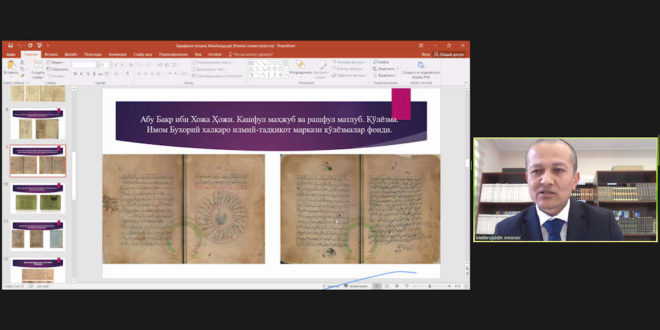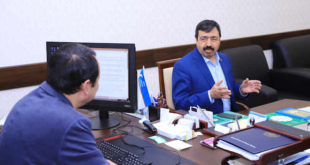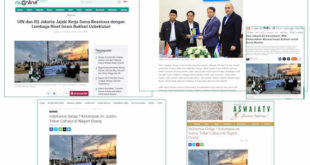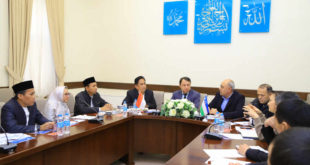The next online seminar in the series “Material Culture of the Zerafshan Valley” was held at the Imam Bukhari International Scientific Research Center in the cooperation with the Asien-Afrika-Institut of the Universität Hamburg (Germany). It was attended by employees of the Center, researchers and scientists from scientific institutions in our country and abroad.
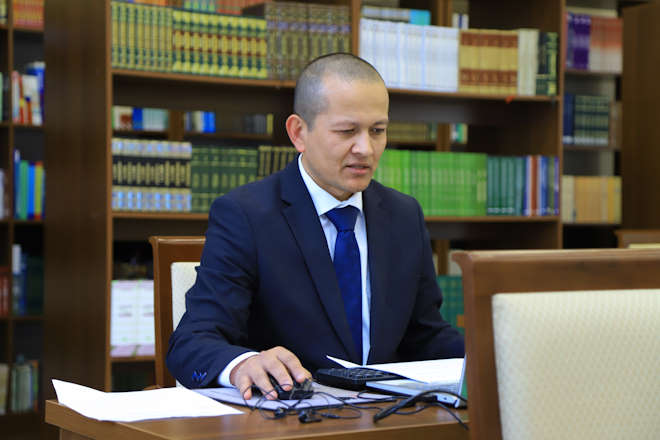
Mekhrojiddin Amonov, researcher at the Imam Bukhari International Scientific Research Center under the Cabinet of Ministers, gave a lecture on the topic “History of Sufism in the Zarafshan valley: Naqshbandiya, Yassawiyya, Kubroviya (15-19th centuries)”.
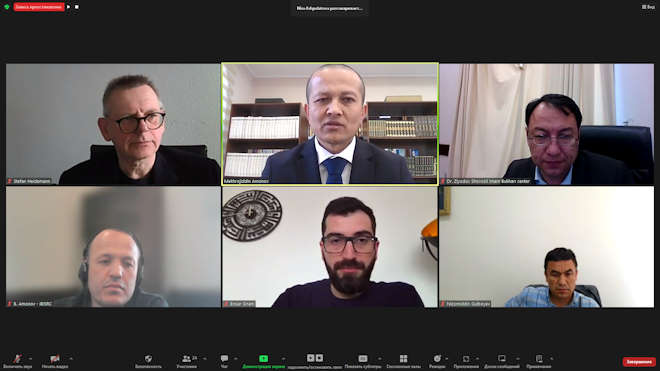
The scientist shared scientific information and sources about the emergence and development of the Kubrovia, Naqshbandi and Yassawi tariqa, which had a wider scope than others in the Zarafshan valley. The processes, causes and historical figures that contributed to the development of the doctrine, which was formed over four centuries into the greatest tariqa of the Islamic world, are examined in detail.
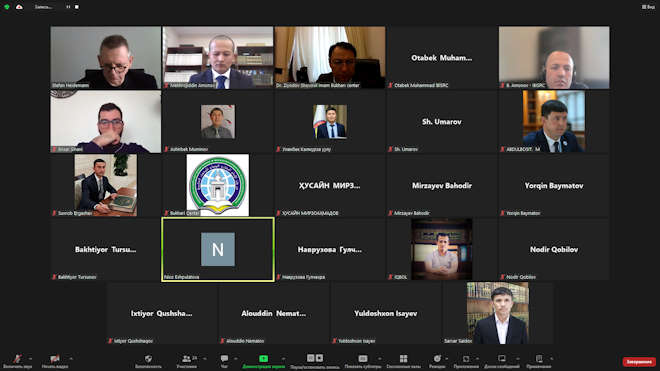
The Naqshbandiya tariqa was a huge social phenomenon for its time because it promoted labor work than economics. In this tariqa, serious attention is paid to the most important social problem of the world – the attitude towards work and the wealth obtained through it. “Dil ba yoru ba kor” that is: “Let your heart be in God, and let your hand be in work”. The slogan proved that a person can practice tasawwuf even while working.

The researcher made valuable suggestions for the preservation, restoration and research of rare sources of tasawwuf history of the oasis and the use of their electronic copies.
 Imom Buxoriy xalqaro ilmiy-tadqiqot markazi bukhari.uz
Imom Buxoriy xalqaro ilmiy-tadqiqot markazi bukhari.uz






